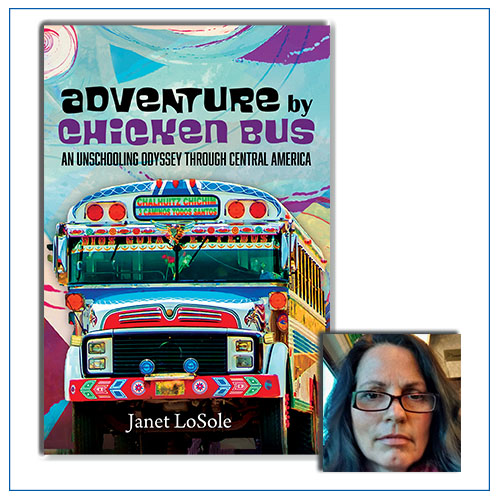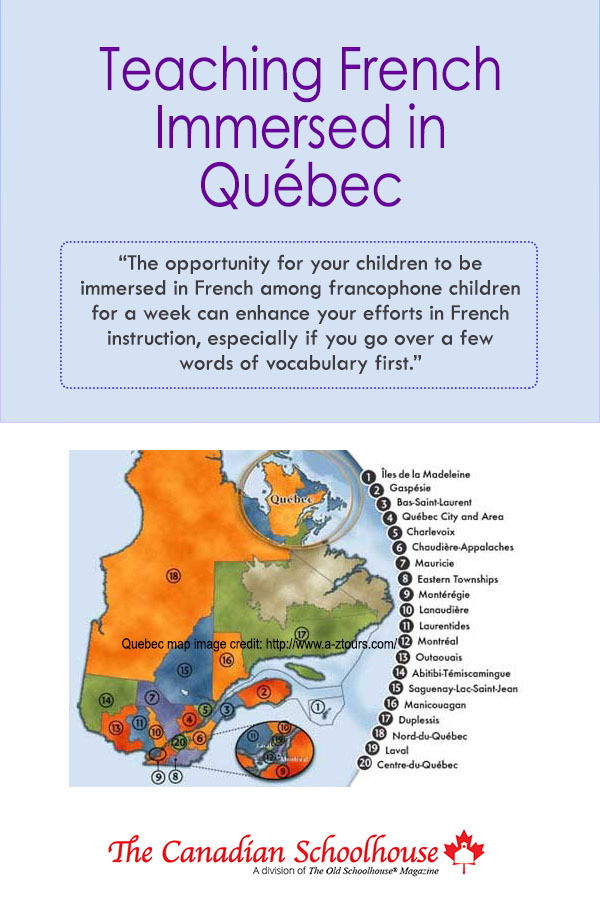
I’ve been an advocate of second (and third) language learning in our homeschool. I’d studied languages at university and had an understanding of foreign language acquisition. I knew the best way to really comprehend and speak a language, a learner must be immersed in it.
First, we used the French version of Reader Rabbit, called Lapin Malin. The titles have been discontinued, but if you can get older copies it is worth it. Kids love the games, and the programs are well set up for learning vocabulary. There are many online games as well, but I cannot comment on their effectiveness.
Then we did something radical; since my husband is a teacher, we spent four entire summers in Québec. Once there, I knew I needed to source programs that allowed the girls to be completely immersed in the language, and frankly it was quite easy to do.
If your family likes camping, consider staying at one of the many campgrounds in Québec. Campgrounds (especially private ones) often offer programs for children. In the camping directory (http://www.campingQuébec.com/), look for the term “Animation pour enfants” which refers to programming for children. Some campgrounds offer animation full days while others only half days.
The “animation” is usually led by university students who organize crafts, sports and other camp-like activities. Outside of Montreal, very little English is heard so choose a campground east of there in places like Granby, Roxton Pond and Lac Brome. Especially in Granby, there is a five-star campground that is outright luxurious but not overly expensive, and a bike trail passes by and heads straight into the city. Excellent campgrounds also exist northeast of the city near Trois Rivières and Shawinigan in the region known as Mauricie. The opportunity for your children to be immersed in French among francophone children for a week can enhance your efforts in French instruction, especially if you go over a few words of vocabulary first.
If camping near a town, look into enrolling your child for a week into that community’s public day camp (Camp de Jour). For the entire summer (7 weeks), we paid less than $200.00 for each child to attend day camp in Trois-Rivières. This was only slightly more expensive than paying for just one week of day camp in Ontario! So, even if you enroll your children for a single week, it is worth the price. Look up Camps De Jour in the community nearest your campground.
Other options include themed camps such as sports camp and science camp, which come with a higher price tag because they are not subsidized by local government. Families who are serious about French as a second language learning can try an FSL camp in various parts of the province. Some camps offer accommodation (try languagecourse.net for listings).
A very unexpected and fun French immersion experience our girls had one summer was taking a cooking class at Loblaws in Shawinigan. The teacher was a young exuberant employee who was delighted to have two anglophone children in his class. As a bonus, no other children enrolled that week so they had Jérôme all to themselves! Jérôme began the half day class by introducing the recipe of the day. Then, the three of them took a tour of the store to collect the ingredients. This was a great exercise in reinforcing French vocabulary. Once organized, they prepared the dish according to the recipe, and of course, at the end, they enjoyed the fruits of their labour. We as parents benefitted as well; the girls could actually prepare a few dishes for us at home!
In many places, we were amazed at the variety of museums even in smaller communities. There are many educational benefits to these of course, but even attending one and hearing French being spoken is valuable. Larger communities sell Museum Passes (Carte Musée) for as little as $30.00 that allows you to enjoy museums, historic sites, interpretation centres and art galleries. On a rainy summer day, we visited Trois-Rivières’ Musées des Ursulines, the Musée Québecois de Culture Populaire and then went next door to tour the Old Prison. On the outskirts of town, the Forges du Saint-Maurice National Historic Site was extremely interesting for the girls. The site of a former major iron producing facility, it is designed to present workshops to schoolchildren during field trips so a great, child-friendly infrastructure already exists for summer visits.
There are more typical ways to get your child to hear and experience French. Any of the numerous blockbuster films will be playing, undoubtedly, in a local cinema; I guarantee your child will not mind what language is being spoken as the story unfolds.
We made a point of teaching the girls how to order food and insisted they at least try to speak to the staff on their own. They giggled when they learned that bagel in Québec was the same word, just pronounced differently. Keep in mind that kids will be more likely to attempt this if you agree to try it yourself.
When we set out to take advantage of the immersion opportunities over the four summers we spent in Québec, we had no idea how many would present themselves. Try it for yourself and see how it encourages your children to appreciate and learn French once you get back home.
 Janet LoSole is the author of Adventure by Chicken Bus: An Unschooling Odyssey through Central America. She and her husband of 25 years use the communities of the world to homeschool their two girls, who, when they are not travelling, read books and sing show tunes. Her writing on homeschooling and travelling can be found on her website.
Janet LoSole is the author of Adventure by Chicken Bus: An Unschooling Odyssey through Central America. She and her husband of 25 years use the communities of the world to homeschool their two girls, who, when they are not travelling, read books and sing show tunes. Her writing on homeschooling and travelling can be found on her website.






















